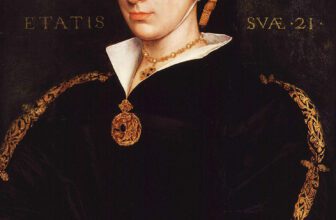
The Enigmatic Curse of Anastasia Romanov: Truth, Mystery, and Legacy
The story of Anastasia Romanov has captivated the imagination of the world for over a century. With elements of royal opulence, tragic downfall, political upheaval, enduring mystery, and impostors, her tale feels torn from the pages of an epic novel. But behind the romance and myths lies a true story that is both heartbreaking and historically significant.
The Last Grand Duchess
Anastasia Nikolaevna Romanov was born on June 18, 1901, in Peterhof Palace, near St. Petersburg, Russia. She was the youngest daughter of Tsar Nicholas II, the last Emperor of Russia, and Tsarina Alexandra Feodorovna. As the fourth daughter (out of five children), Anastasia was part of what came to be affectionately known as OTMA, an acronym from the first names of the four Romanov sisters: Olga, Tatiana, Maria, and Anastasia.
From a young age, Anastasia stood out. She had strawberry-blonde hair, blue eyes, and an impish grin that was often captured in family photographs. Known for her mischievous nature, sharp wit, and lively personality, Anastasia was a source of endless amusement in the imperial household. She was playful, high-spirited, and fond of practical jokes, a stark contrast to the more serious and reserved demeanor of her elder sisters.
Her life, however, was not all play and privilege. Despite being a member of one of the most powerful royal families in Europe, Anastasia grew up during a time of immense turmoil and change in Russia. The nation was crumbling under the weight of war, political instability, and social unrest.
A Royal Family in Peril
The early 20th century was a tumultuous time for the Romanov family. World War I placed tremendous strain on the Russian Empire, and Tsar Nicholas II’s decisions, particularly his choice to personally lead the military while leaving domestic affairs in the hands of the Tsarina and the mystic Rasputin, caused widespread dissatisfaction.
The Russian Revolution of 1917 marked the end of over three centuries of Romanov rule. In March 1917, Nicholas II abdicated the throne. The imperial family was placed under house arrest, first in the Alexander Palace, then moved to Tobolsk in Siberia, and finally to the Ipatiev House in Yekaterinburg, a fortified house ominously referred to by the Bolsheviks as the “House of Special Purpose.”
The Tragic Night of July 17, 1918
In the early hours of July 17, 1918, the Romanov family’s fate was sealed. Under orders from the Bolshevik leadership, specifically Yakov Yurovsky and the Ural Soviet, the entire family, along with their doctor and a few loyal attendants, were awakened and told they were being moved for their safety due to unrest in the region.
They were led to a basement under the pretense of taking a family photograph for verification purposes. Suddenly, the execution squad entered the room and opened fire. It was a brutal and chaotic massacre. Some of the family members survived the initial hail of bullets due to the hidden jewels sewn into their clothing, which acted like makeshift armor. But eventually, all were killed, including 17-year-old Anastasia.
Why Did Russia Turn Against the Romanovs
The fall of the Romanovs was not just political, it was emotional. Years of suffering, economic hardship, and repression had turned the Russian people against their rulers. The nobility and middle classes grew disillusioned by the Tsar’s incompetence, while the working class and peasants saw the monarchy as the source of their misery.
The Bolsheviks, led by Lenin, saw the Romanovs not as human beings, but as symbols of tyranny. For Lenin, their existence was a threat to the revolution. Monarchist forces, known as the White Army, were still fighting the Bolsheviks in the Russian Civil War, and there was concern that the Romanovs might be rescued and used as a rallying point for counter-revolution.
On the night of July 16–17, 1918, the Romanov family, Nicholas, Alexandra, their five children, and four loyal attendants, were awakened and led to a basement under the guise of being moved. There, they were executed by a Bolshevik firing squad. The children were shot, stabbed, and beaten in a gruesome ordeal, their hidden jewels making them harder to kill.
It was not just an execution. It was a symbolic obliteration of the old world.
Why Didn’t Britain Save the Romanovs
Given that Tsarina Alexandra was a granddaughter of Queen Victoria, and Tsar Nicholas II was a cousin of King George V, many have wondered why the British monarchy didn’t intervene. In fact, at one point, a plan was in motion to rescue the Romanovs.
In March 1917, the British government, under Prime Minister David Lloyd George, extended an offer of asylum to the Romanovs. King George V initially supported this idea. However, political pressures and fears of socialist uprising in Britain caused him to change his mind.
The British monarchy itself was under scrutiny. Anti-monarchist sentiment was on the rise, and allowing the unpopular Russian royals into Britain could have been politically disastrous. Additionally, Alexandra was deeply unpopular in the West. Her German origins made her suspect during wartime, and her association with Rasputin tarnished her image even further.
Behind the scenes, Queen Mary, King George’s wife, is believed to have strongly opposed the Romanovs’ rescue. Like her husband, she feared the consequences of sheltering the Tsar and his family. Their presence might invite scandal or even violence at home. It was a cold political calculation: preserve the British monarchy by turning a blind eye to the plight of their cousins.
The offer of asylum was quietly withdrawn, and the Romanovs remained trapped in Russia. By the time Britain reconsidered, it was too late. The family was executed before any further rescue could be arranged
The Myth of Anastasia’s Survival
In the immediate aftermath of the execution, the Bolsheviks kept the Romanovs’ deaths a secret. This vacuum of information allowed rumors to flourish, and among them, the most enduring was that one of the daughters, Anastasia, had survived.
The idea that Anastasia had somehow escaped became a global sensation. Sightings were reported, stories were fabricated, and impostors emerged. The most famous of these was Anna Anderson, a woman who claimed to be the lost Grand Duchess. Found in a Berlin asylum in 1920 after a suicide attempt, Anderson’s story attracted international attention and a passionate group of supporters.
Her claims divided those who had known the Romanovs personally. Some, including members of the extended family, believed she was telling the truth. Others dismissed her as a fraud. Over the decades, the legal battles and media frenzy surrounding Anderson’s identity only fueled public fascination.
DNA Evidence and the Truth Revealed
The mystery lingered for decades until the fall of the Soviet Union allowed researchers and historians to finally investigate what had become of the Romanovs. In 1991, a mass grave was discovered in a forest near Yekaterinburg. Forensic analysis confirmed that the remains of Tsar Nicholas II, the Empress, and three of their daughters were present.
This raised a pressing question: where were the remains of the other two children, Alexei, the Tsarevich, and one of the daughters, either Maria or Anastasia?
Then, in 2007, a second grave was found nearby. It contained the remains of two individuals, one boy, one girl, burned and doused in acid. DNA testing confirmed them as Alexei and the missing daughter. Subsequent DNA analysis, including mitochondrial DNA from living relatives of the Romanovs (including Prince Philip, Duke of Edinburgh), confirmed the identities beyond doubt.
The tests also proved definitively that Anna Anderson was not Anastasia Romanov. She was, in fact, a Polish factory worker named Franziska Schanzkowska.
The mystery, though romantic and long-believed, had been solved. Anastasia Romanov had died alongside her family in 1918.
Did Anastasia Suffer from a Disease?
Unlike her brother Alexei, who suffered from hemophilia, a genetic disorder that impairs the blood’s ability to clot, there is no evidence that Anastasia had any significant illness. However, she may have carried the gene for hemophilia, passed down from her mother, who was a granddaughter of Queen Victoria.
What is documented is that Anastasia was a healthy, energetic young woman, known more for her mischief than for any physical ailment. Her robust health likely contributed to the myth of her survival, people found it easier to believe that someone so full of life could escape such a grim fate.
The Romanov Fortune: Lost or Hidden?
Another aspect that added fuel to the Anastasia legend was the idea of a vast Romanov fortune, supposedly hidden in secret bank accounts or smuggled out of Russia before the revolution. The Romanovs were among the richest families in the world, possessing treasures of inestimable value, jewels, palaces, artworks, and holdings across Europe.
Much of this wealth was confiscated by the Bolsheviks. Some of their most valuable possessions, including the famed Fabergé eggs, were sold off or lost during the chaotic aftermath of the revolution. While rumors persist of secret Romanov bank accounts or caches of hidden treasure, no definitive evidence has surfaced.
If Anastasia had survived and could prove her identity, she would have had a claim not only to a royal title but possibly to a portion of this legendary fortune. This prospect undoubtedly inspired many of the impostors who emerged in the 20th century.
Are There Any Romanovs Alive Today?
Yes, there are living descendants of the Romanov dynasty today, but none are direct heirs of Tsar Nicholas II and Alexandra, as their entire immediate family perished in 1918. The surviving Romanovs are part of collateral branches of the family, descended from Nicholas II’s cousins and uncles.
One of the most prominent claimants to the legacy is Grand Duchess Maria Vladimirovna, who lives in Spain and claims to be the head of the Imperial House of Russia. She is a descendant of Grand Duke Vladimir Kirillovich, a cousin of Nicholas II. Her son, George Mikhailovich Romanov, is often seen as the future representative of the Romanov legacy.
Though Russia is no longer a monarchy, there is a growing nostalgia for the Romanovs, especially as interest in history and national identity continues to evolve in modern Russia. Commemorative events, restored palaces, and even the 2000 canonization of Nicholas II and his family by the Russian Orthodox Church have rekindled a certain reverence for the dynasty.
A Myth That Shaped Culture
Anastasia’s story has become legend, transcending history to become part of pop culture. From books and documentaries to operas and movies, most notably the 1997 animated film Anastasia, her story continues to enchant audiences. These tales often blend fact with fantasy, romanticizing her life and tragic end.
The truth, however, is poignant enough. Anastasia Romanov was a real girl, born into unimaginable privilege and swept into the darkest chapter of her nation’s history. She was not a myth or a fairy tale, but a bright young woman whose life was brutally cut short at just 17.
The fascination with her story says as much about our longing for happy endings as it does about our reverence for lost worlds and fallen dynasties. Anastasia represents the last flicker of imperial Russia, the innocence destroyed by revolution, and the enduring mystery of history that can still stir hearts across generations.




